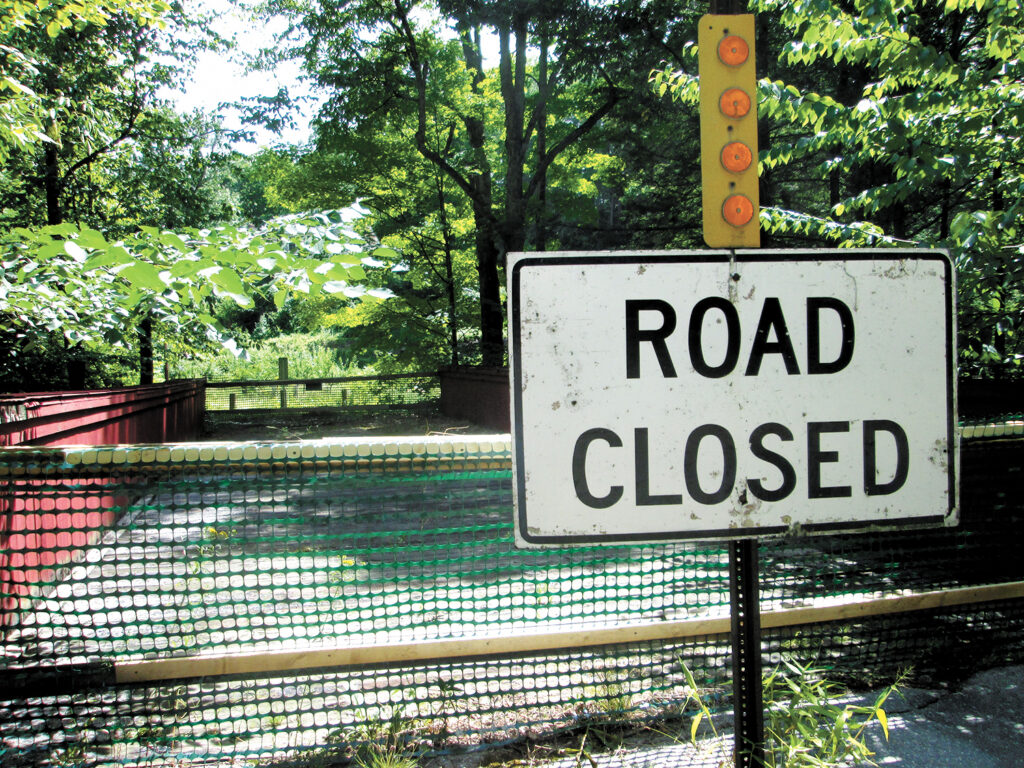Wilton’s Red Bridge closed to bicycles and pedestrian traffic

WILTON – The New Hampshire Department of Transportation has ordered the Red Bridge on Route 101 in West Wilton closed to bicycles and pedestrians. On Tuesday, July 26, the Highway Department installed fencing and No Trespassing signs. The bridge, also known as the Livermore Bridge, was closed to automobiles in 2001 when a new bridge connection to Russell Hill Road was opened.
The bridge has been declared a historical archaeology treasure.
In 2000, a proposed subdivision on Russell Hill Road prompted the town to take a closer look at the bridge over Blood Brook connecting that road with Route 101. The bridge had been on the state Department of Transportation’s “red list” for some years. It was one lane and in need of repair. The intersection, with less than a car length between the bridge and the highway, was considered unsafe. The town was to make decisions concerning by the following year.
At the time, while DOT was in favor of demolishing it, the state department of historic preservation called the bridge “a truly unique structure for posterity,” and suggested “diverting motor traffic to a modern bridge erected downstream, and preserving this marvelous old boxed pony for pedestrian and equestrian traffic.”
After considerable discussion, the town did just that. A new bridge was constructed, and the old bridge remained open to pedestrians and bicycles.
The bridge construction is described as a “timber, half-through. Pony lattice truss,” a style which dates to the mid-1800s. It has high wooden sides and is described as being “a covered bridge without the cover.”
According the Bridgefinder website, the bridge was constructed in 1860, rebuilt in 1930, and “rehabilitated” in 1973.
The website Historic Structures says, “The Livermore Bridge is the only known example of a timber, half-through, pony lattice truss in North America.” The bridge is about 52 feet long. The abutments are “irregular granite blocks” with a dry-masonry ramp of mid-sized boulders supports the Russell Hill Road approach.
According to the website, what is known as Town lattice construction, was patented in 1820 by Ithiel Town. It uses a network of diagonal planks pinned together at their intersections and further secured by horizontal chords of the top and bottom truss. Timber lattice trusses were widely used in New England and metal versions were popular in England.
New Hampshire has had many lattice truss bridges built by the Boston and Maine Railroad. Three of those still existed in 2001.
A few years ago, the Economic Development Committee explored the possibility of moving the bridge to a downtown site but, according to Chairman Jen Beck, “the cost was prohibitive, and it was determined it has to stay where it is to preserve its historic integrity.”
The future of the Livermore Bridge has not been discussed by the Select Board.


